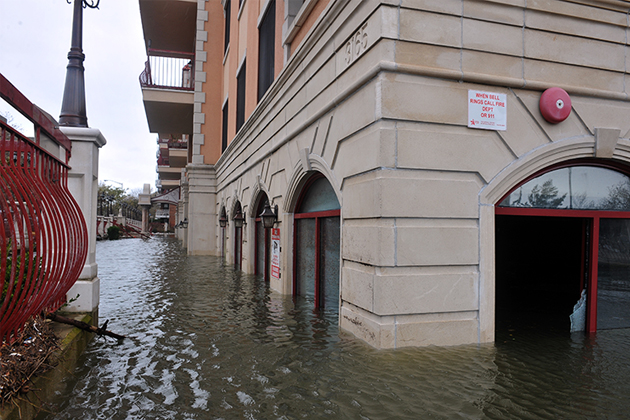
Commercial property policies often cover more than just property damage. Most property policies cover a policyholder’s business interruption losses or lost rental income resulting from property damage, and may include numerous coverage extensions, like for debris removal and demolition costs. But property policies may also contain sublimits for certain perils, such as floods and earthquakes. The application of sublimits to losses can be confusing, leaving policyholders wondering about the extent of their ability to recover. For example, with respect to hurricane-related losses, do flood sublimits limit recoveries for property damage only, or do they also restrict the amount a policyholder can recover for business interruption and other non-property damage losses? The answer often turns on the fine print, which may be vague and can lead to coverage disputes.
Some policies expressly state that flood sublimits apply to more than just property damage. For example, the ISO Businessowners Flood Coverage Form, Form BP 10 79 07 13, states that “[t]he Limit of Insurance that applies to flood coverage under this endorsement also applies to the Business Income and Extra Expense Additional Coverages.” But other policies are much less explicit about whether flood sublimits extend to coverages other than for property damage. Thus, when a policy fails to unambiguously state that a sublimit applies to all losses or coverages, policyholders should take the position that such sublimit applies to property damage only. Numerous court decisions support this position.
Most recently, in the 2022 case, Hanover Casualty Co. v. Seven Acres Jewish Care Services, Inc., a Texas appeals court analyzed a commercial property policy with two coverage forms for 1) buildings and personal property, and 2) business income and extra expenses. Those forms had separate premiums and limits. A flood endorsement added flood as a covered peril. In concluding that the flood endorsement sublimit did not limit coverage for business income loss, the court relied on the fact that the policy provided two different limits for business income loss and property loss. It explained that the definition of flood related to direct physical loss to property, but that the business income coverage form covered lost earnings from the suspension of business operations due to loss caused by a covered peril.
The Seven Acres Court also reasoned that the insurance company could have used clearer language if it intended for the flood sublimits to apply to business income loss. The court looked to other policy provisions and noted that when certain coverages were contained within sublimits, the policy expressly said so. Finally, the court explained that its ruling was supported by the “ensuing loss” provision in the flood sublimit endorsement, which provided that flood sublimit did not apply to other claims for ensuing loss.
Alley Theatre v. Hanover Insurance Co. , which was decided by a federal court in Texas in 2020, is another example where a court ruled that a flood sublimit did not limit coverage for lost income. The policy at issue there was an all-risk commercial property policy with flood coverage endorsed onto the policy. The flood endorsement provided “blanket flood coverage, limited to $3 million per occurrence, for direct physical loss to covered property at covered locations caused by flood.” The policy also provided $5 million in business interruption coverage under the income coverage part for when the policyholder’s business was interrupted by direct physical loss or damage to covered property.
The court found that the most reasonable interpretation of the policy was to treat the income coverage part as subject to its own $5 million limits, rather than also applying the $3 million in flood sublimits. It explained that the flood endorsement added coverage for direct physical loss to property and did not mention income coverage, and “[t]o apply the flood endorsement limit to losses caused by flood, but not covered by the flood endorsement, would give the flood endorsement limit a broader scope than the flood endorsement’s coverage.”
As these cases show, the interplay between sublimits and other policy provisions can be complex, and often insurance companies will rely on language that is open to interpretation to support their attempts to limit coverage. Fundamental rules of insurance policy interpretation—including that all ambiguities in the policy should be construed in favor of coverage and all coverage limiting provisions must be explicitly clear and afforded a strict and narrow construction—should aid policyholders in opposing such attempts. Policyholders should resist efforts by their insurance companies to stretch sublimits beyond their intended scope and should consider consulting coverage counsel to assist in their efforts to maximize their insurance recoveries when confronted with the potential application of policy sublimits.
